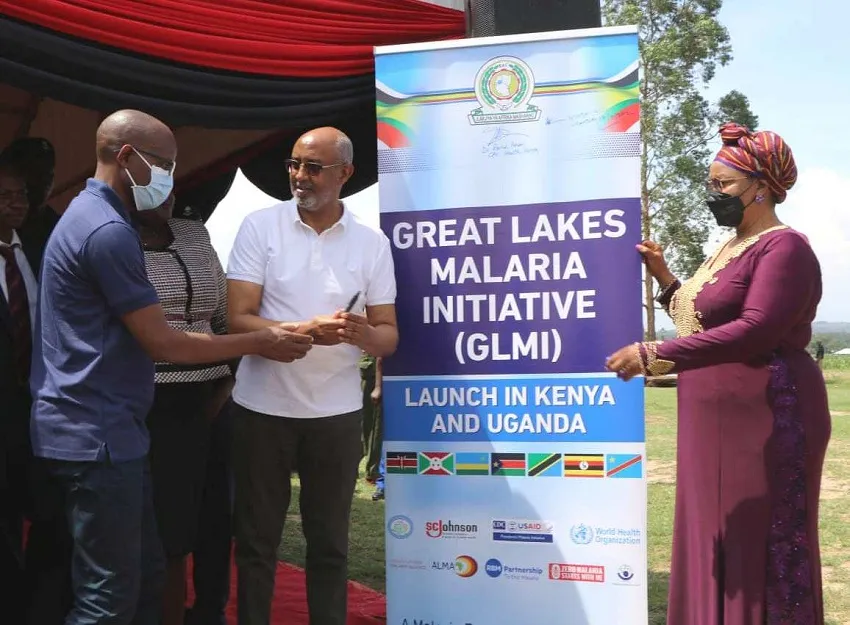The journey to ensuring ‘Zero AIDS related deaths’
Monday, 3 December, 2012
Eight percent of the children under 5 who die in sub-Saharan Africa die from AIDS, and 19 percent of all people living with HIV/AIDS are children. AIDS has affected and infected many lives. But through the years, science has taught us not to despair because it is an epidemic that can be controlled. This year, as we observe the World AIDS Day, we continue to focus on the theme ‘Zero AIDS related deaths’.
While most people around the world only hear about it, Sub-Saharan Africa continues to be worst affected by the pandemic. Burdened with a whopping 68 percent of the world’s HIV infected population, and 90 percent of the world’s children who have HIV/AIDS, we continue to grapple with the realities of HIV, over 25 years after the first reported case. While paediatric AIDS has been eliminated virtually in a number of countries, in Africa approximately 900 babies are newly infected with HIV every day. Nearly all of them acquire HIV from their mothers during pregnancy, childbirth or breastfeeding. These infections can be prevented.
Helena Maenge who hails from Makete in Tanzania is one of a very small proportion of women in Africa who know this. Helena has two children having lost a daughter at the age of 21 months in 2010 to AIDS. She knows only too well the pain a mother feels when she loses a baby at such a tender age. It took her years to disclose her status and that decision cost her daughter’s life and almost cost hers. When she finally did, at the behest of her husband, she was referred to join a support group facilitated by AMREF. This group comprises of mothers and fathers living with the virus and whose main agenda is to prevent mother to child transmission of HIV. They also support each other socially and psychologically and hence deal better with stigma. Through this project, Helena learnt that she could prevent her last born child from contracting HIV. The child is 11 months and has tested HIV negative, thanks to free medical intervention and proper advice.
But unlike Helena, many in sub-Sahara Africa do not have access to this information yet more lives could be saved by simply giving proper information especially in the most rural parts. People from the most vulnerable to the most removed remain unaware of how easily we can prevent HIV transmission from a mother to her child. Most mothers are unaware of their own HIV status, others face severe stigma while most of them have limited access to care and treatment.
The global economic crisis has caused many to redirect financial priorities. Reduced resources jeopardize the process of protecting those who are most vulnerable; women and children. There have been numerous calls for partnerships between governments, corporate, NGOs and CBOs to ensure that the expertise is matched with adequate funding in order to make a notable impact. Investing to ensure less HIV transmission to children, more access to medication, treatment and counseling for mothers is undoubtedly wise.
While we in Africa wait for a sustainable financial solution, the task is to tackle complex social stigmas that often keep women from seeking intervention for them and their child from the available resources. From experience, mothers involved in support groups are often more likely to receive proper care, deliver their babies in a health care facility and disclose their HIV status. This will without a doubt reduce HIV transmission.
We can all make a difference with our attitudes. By ensuring every man, woman and child gets the information they need, we ensure that timely consultations to health facilities are made a priority.








Comments
[…] as many other agencies focusing on fistula, such as the Fistula Foundation, UNFPA, EngenderHealth, AMREF, Norwegian Red Cross and many others, there are currently 52 FIGO Fellows –trainee fistula […]
[…] tan solo tenía 8 años se negó a que le practicaran la ablación y convenció a su abuelo, un anciano masái, argumentado que esta práctica también implicaba dejar de ir a la escuela. […]
[…] there is a need to provide appropriate training, supervision and remuneration for community health workers to enable them to tackle existing and emerging health challenges, such as non-communicable diseases, […]
[…] of school-going children. Katembu was also leading a delegation to take stock of progress made by Amref Health Africa’s Maternal and Child Nutrition Project, which was launched in May 2016. Katembu noted that the project has helped to improve maternal, […]
[…] Health Africa Group CEO, Dr Githinji Gitahi who is also the current co-chair of UHC2030, noted that “UHC is a human right that ensures the people’s constitutional right is obeyed, […]
[…] to change this are ongoing and a campaign was launched at the Africa Health Agenda International Conference in Nairobi last year that […]
[…] in Kenya. Nice Leng’ete, who escaped the cut when she was 8-years-old, has earned global acclaim, including a feature story in the New York Times, because of her community-led approach to ending […]
[…] ALSO READ: Leap, the mHealth platform and i-PUSH […]
[…] post Second Innovate for Life Fund Accelerator week appeared first on Amref Health […]
[…] post Amref receives Ksh 4.6 billion grant to fight TB and malaria in Kenya appeared first on Amref Health […]
[…] post Christmas in Dagoretti Child Protection and Development Centre appeared first on Amref Health […]